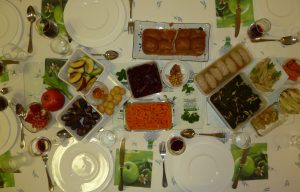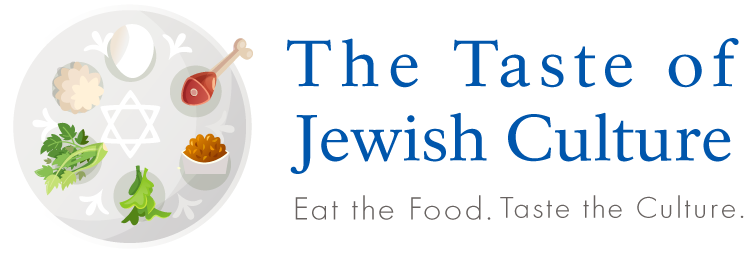Rosh Hashana is the start of the season in which we Jews ask for forgiveness — from those we may have harmed or offended, from God, and from ourselves. So in that spirit, I will first apologize for not posting in quite a while. I’ve been busy with moving apartments here in Jerusalem (an auspicious start for the new year ahead) and with preparations for my upcoming U.S. Speaking Tour in October and November.
I have two new lectures for then, which I’m putting the final touches on, and I’m handling booking all the gigs. Thankfully, I have had a good response, and have quite a few talks booked already, in four different states. But since I will be there for a bit over a month, I still have plenty of open time in my schedule. So if you’d like me to come present to your community (these are good for synagogues of all types, JCCs, organizations/businesses, college groups, or even large groups of individuals), please reach out for more information!
But I did want to at least get one new post in before the new year begins, and what better topic than a continuation of what I discussed before last Rosh Hashana, a year ago. The striking thing about Rosh Hashana’s foods is that every Jewish community has numerous foods that they consider traditional, or even nearly imperative to be eaten, and yet virtually none are universal among Jews, nor did they grow out of direct requirements of the holiday. Most of them grow out of various symbolic connections that we find in these foods.
In last year’s post (which I suggest you read now, if you have not yet), I discussed the origins of the custom, the confusion that surrounded one specific symbolic food, and the vast degree of diversity this created moving forward through history. I ended by touching on the question of how we might relate to this mystical custom even if we come from a more rationalist background.
Now I’d like to address some of the more general aspects of this custom, a few of the surprising aspects, and (of course) what this can help teach us about the Jewish people.
Why These Foods?

I suspect that many of the classic symbolic foods simply grew out of the fact that they were the foods available at Rosh Hashana time! Apples are just coming into season in the fall, so they would logically be eaten then anyway. And in fact, many Jews have the custom to consume a “new” fruit on the second night of the holiday, in order to give them an opportunity to make the blessing of Shehechiyanu, said on happy occasions. Potentially, apples that were just coming into season would have provided Jews with a great option for their Shehechiyanu.
(In fact, this also highlights a point that I often like to make when speaking to non-Israelis about our produce here. In Israel, we locally grow the vast majority of the produce that we consume, meaning that we eat seasonally, with many things completely unavailable when they are out of season. In America, for example and in contrast, much of the produce is imported, and thus most fruits and vegetables are available year-round. Thus, in order to find a fruit to make the blessing over for second night of Rosh Hashana, most people seek out an exotic fruit of some kind. In reality, however, while the blessing would certainly apply to exotic fruits, I point out that the original purpose was for the opposite — normal fruits that we eat regularly, but that have been out of season and unavailable since last year. This is indicated by the words of the Shehechiyanu — rather than focusing on the fruit, they bless guide for sustaining us and for “bringing us to this time.” When we first eat the figs that we hadn’t seen since last year, it reminds us of how long has passed and instills in us the desire to thank and bless God.)
Like the apples, many of the other classic symbolic foods are those that are available in this season. That does not, however, explain all of them; what about the honey, for example? Honey doesn’t spoil, so it is available year round, but there is still a season in which it is more abundant. In many parts of the world, the end of summer is when the bees produce the most honey, since it follows the period in which the flowers are blooming and the greatest amount of pollen is available. Interestingly, however, in this region of the world, peak season for honey production is more in April or May, as we only get rain in the winter, meaning there is significantly less available pollen in the summer. Perhaps this explains why honey is less universal, and slightly less common specifically in this area.
Not Uniquely Jewish

Even numbers play a role. Seven is an auspicious number within Jewish numerology; since the world was created in seven days, seven represents completion and wholeness. One of the more common Rosh Hashana dishes in Morocco, therefore, is couscous aux sept legumes — seven-vegetable couscous. However, what is most interesting is that such 7-veg couscous is actually a festive dish throughout Morocco, by Jews and non-Jews alike. Jews are not the only people for whom seven is seen as an auspicious number!
For Chinese New Year, jiaozi dumplings are commonly eaten. One reason is that the name is the same as a word for a middle form of Chinese currency, so they are seen as symbolic of monetary fortune. Some Chinese people even have the custom to hide a coin inside, with special luck falling to the person lucky enough to bite into that dumpling. Sounds an awful lot like the Jewish tzimmes idea, eh?
Perhaps even more remarkable is the Haft-Seen Table found at Nowruz, Persian New Year. This celebratory table displays seven items (haft means seven) all of which begin with the letter seen. Once again, we find that number seven, and more than that, a number of the foods are sweet. Furthermore, the color green, symbolizing growth and abundance, features prominently (typically with freshly planted wheat grass), a custom that also crops up at times among Jews. Tunisian Jews frequently eat t’fina pkaila on Rosh Hashana. It is a type of hamin that features a lot of green spinach or chard. We can even see the green-food-New Year connection in other cultures; on Tết, the Vietnamese New Year, a typical food is a type of green sticky rice.
Most surprising is what appears to have grown out of a direct Jewish influence. In the American south, black-eyed peas were grown as animal fodder, having been brought from their indigenous home in Africa along with the slaves. Unlike most of the residents there who would never touch such low-class animal food, two groups did eat them, knowing how delicious and healthful they were — the Black slaves and the early Jewish residents. One of the most popular Black American foods for New Years is called Hoppin’ John, made with rice, pork and those same black-eyed peas. Many folk explanations for this custom have been offered, most of which have been clearly disproven. Thus, many food scholars believe the source lies in the fact that only Blacks and Jews were eating black-eyed peas in the region. They are one of the foods eaten on Rosh Hashana to fulfill the classic symbols (see my post from last year for discussion on this exact point). The theory is that Black Americans saw the local Jews eating black-eyed peas for good luck on their New Year and chose to do the same on their own New Year!
Is This Disappointing?
Showing that a beloved custom might not have the origins or meaning that we have always assumed can be a risky proposition. In no way am I trying to destroy the meaning that this custom holds for Jews everywhere — in fact, quite the opposite. I come not to debunk the custom, but to deepen our connection to it.
If in fact, as I suggest, the reason these specific foods were chosen as symbolic grows out of their seasonality, that meant that they were a blank canvas on which we could paint our own hopes and wishes. And as an ancient people, Jews have always sought meaning in the mundane, trying to elevate them to a sacred and significant level. We look at all of the foods that are in season and available at this time and refuse to believe that is simple coincidence. There must be a reason, we say, that God made these specific things available now. So we imbue them with the significance we hope to see from the coming year. In a way, these foods are the “anti-matzah.” With matzah we have a food that grows directly out of the historical events that form the source of the holiday itself. With Rosh Hashana symbolic foods, the direction of influence is opposite. Where matzah’s meaning leads to the food we consume, on Rosh Hashana the foods we consume lead to the meaning.

Finally, the liturgy of Rosh Hashana repeatedly focuses on three concepts in our relation to God at this time: malchiyot (kingship), zichronot (remembrance), and shofrot (trumpeting). I believe all three can deepen our understanding of these symbolic foods. A benevolent king provides his people with their needs, and so we look at the foods that God provides for us now and uses them to thank him. We also remember that we are a diverse people with a long history of widely ranging traditions. Thus, we embrace the similarities and differences between the food customs of different Jewish communities, as well as the different relationships our foods show to those of communities of non-Jews all over the world. We are truly a global people. Finally, by highlighting our gratitude, we can also influence other peoples and build bridges between us and them, thus broadcasting God’s greatness for all of the people of the world.
I hope this helps give new and deeper meaning to your Rosh Hashana meals. I also hope the New Year brings blessings of goodness, health, sustenance, pleasure and of course good food to all people everywhere. Finally, I hope to see many of my American readers when I’m there in October and November!






